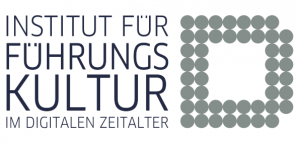Digitisation opens up many opportunities for companies. It enables them to develop new business models and restructure business processes. But digitisation is also the root of many new challenges companies and their employees have to face: because it comes with changes in corporate work structures, relationships and content.
Digitisation results in new leadership requirements
These shifts lead to new requirements of executives who are the key to success in mastering and shaping this change. They need to
- have an open and interested attitude towards digital change and the digitised working world,
- have in-depth knowlege of modern leadership processes as well as digital technologies and processes,
- move professionally in an environment characterised by rapid change, low plannability and increasing complexity; and
- lead their staff and teams in such a way that they optimally use their resources and potentials in the digital transformation process – at their own initiative and independently.
Digitisation requires a new form of self-conception and new competences
When developing such self-conception and the required competences of their executives, companies need to answer the following questions:
| Question 1: | Which specific competences do our leaders need in the digital age in order to lead their staff and the divisions they’ve been entrusted with successfully and purposefully? |
| Question 2: | To what extent have they already developed these skills? And: |
| Question 3: | How can leaders develop the competences they are still lacking, and which support do they need to do that? |
Mastering the challenges of digitisation
In order to support companies in finding answers to these questions and mastering these challenges, the IFIDZ developed the following initiatives:
Initiative 1: Development of a competence model for leaders in the digital age
| Objective: | Determine the relevant comptences needed to lead successfully and purposefully in the age of digitisation |
| Tool: | Meta study: “Leadership competences in the digital age” |
| Result: | IFIDZ Competence Ranking |
Initiative 2: Development of an analysis process to measure digital and leadership maturity of executives
| Ziel: | Identifying the characteristicts of new relevant competences for leaders |
| Tool: | “Leadership-Index for Digital Transformation” (LEADT) |
| Ergebnis: | Degree of maturity of the digitally-oriented leader |
Tool to identify and develop the new leadership competences
With the “Leadership Index for Digital Transformation” (LEADT), companies can determine the digitally-oriented degree of maturity – a combination of digital maturity and leadership maturity – of their executives. Based on the outcome, they can then take personnel decision and plan the necessary support and development measures for turning their executives into true digital leaders – i.e. the leadership personalities they need in the digital age.
On the following pages, you can find more detailed information on the “Leadership-Index for Digital Transformation” (LEADT) – History, Content, Analytical process, Fields of Application – please note, these pages are only available in German at this stage.

